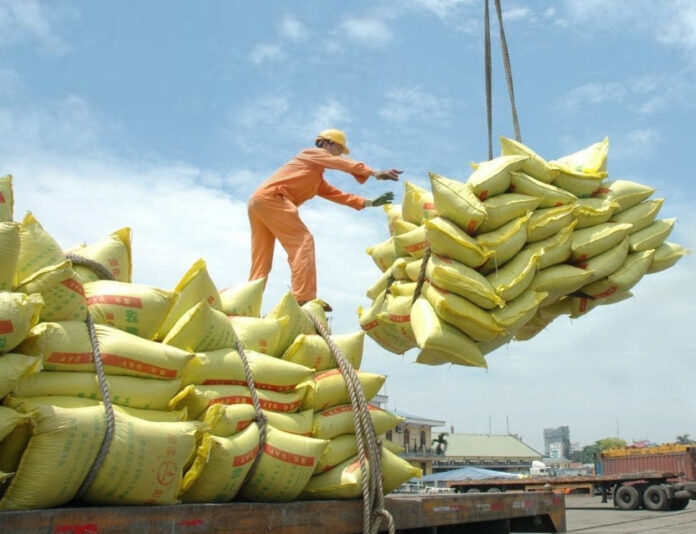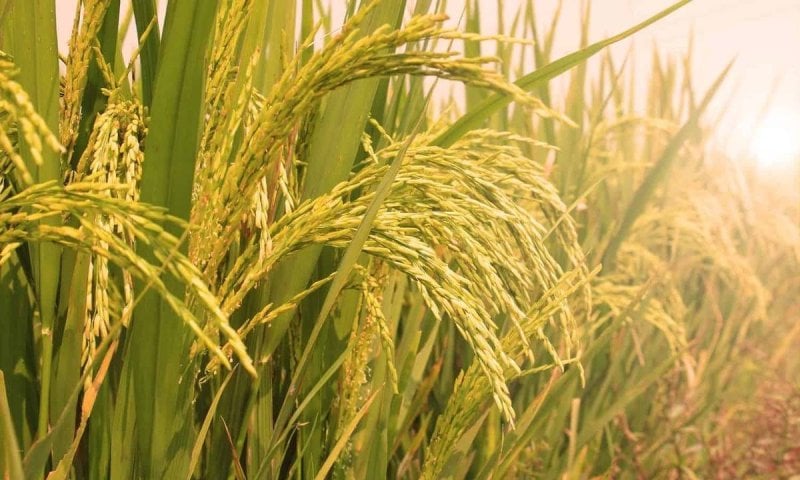Tags
Pakistan’s rice exports surge by over 76.5% in first six months
Rice exports likely to make a record of over 3.5bn dollars this year

Driven by a bumper crop and robust international demand, Pakistan’s rice exports for the first half of this financial year have soared by over 76%, surpassing expectations. According to data released by the Pakistan Bureau of Statistics (PBS), from July to December 2023, the country exported rice valued at $1.63 billion, a remarkable increase from $927 million during the same period in 2022, reflecting a growth of 76.5%.
Exporters anticipate that the overall export of rice could reach a historic $3.5 billion, considering the current surge in various rice varieties. The export figures include 2,570,727 metric tons (MT) of rice, compared to 1,732,884 MT during the same period in 2022, indicating a substantial 48.35% increase in volume. Basmati rice accounted for 318,284 MT, representing superior quality, while 2,252,442 MT comprised other rice varieties.
The rice sector in Pakistan holds significant importance in terms of export earnings, domestic employment, rural development, and poverty reduction. Rice is a vital food and cash crop, contributing 3.0% to agriculture’s value added and 0.6% to GDP, making it the second main staple food crop after wheat. But what is the reason behind this sudden appreciation in the export of rice?
Export Market Insights:
Pakistan currently exports $1.4 billion worth of rice globally, while the world’s total rice imports amount to $19.2 billion. Notably, semi-milled or wholly milled rice presents a substantial opportunity for additional exports worth $715.3 million. Geographically, the demand for rice is fragmented, with major importers situated in Asia, the Middle East, and Africa. China stands out as a significant importer, representing a quarter of total trade, and there is a rising demand for rice in African countries like Nigeria.
The global rice trade predominantly revolves around two main products: fragrant rice and non-fragrant rice. Basmati rice, highly demanded in the European Union and the Middle East, is mainly produced and exported by India and Pakistan.
Impact of Indian Export Ban:
The ban on Indian rice exports has proven beneficial for Pakistani exporters. Being the holder of 40% market share, the ban on the export of all rice except high-end basmati, presents a golden opportunity for Pakistan. Buyers from Africa and the Far East, who previously purchased Indian rice, have shifted their preference to the Pakistani market.
Exporters anticipate this trend to persist until there is a relaxation in India’s rice export policy.
The exclusive body that represents rice exporters, Rice Exporters Association Pakistan, earlier told the media that with a bumper crop of rice this year, it is confident that rice exports will surpass the record $3 billion, marking an encouraging development for the sector. REAP’s chairman said that despite being the second major export item after textiles, the rice sector currently receives no subsidy or support from the government.
Impacts on Food Security and Domestic Industry:
A potential downside of the surge in rice exports could be a price hike in the local market. A rice shortage could have far-reaching impacts, affecting wheat, soybeans, corn, and maize prices, with potential consequences for food items and fuel. A shortage has already been in effect resulting in panic buying by a lot of the countries.
While the producers of rice celebrate high profitability, the government gears up for another big concern. The annual food inflation in December 2023 stood at a staggering 27.5%%. What is more interesting, is the requisite inflation in rice.
According to inflation data published by the Pakistan Bureau of Statistics (PBS), the annual inflation in the prices of rice in the month of December was recorded at 45.6 % in urban areas and above 50.68 % in rural areas.
Talking to Profit, former Vice President Pakistan Rice Exporters Association (REAP) claimed that the export is expected to improve in coming months keeping in view the fresh crop and rising demand in markets especially Middle East ahead of holy month of Ramadan.
He claimed that the price of the kitchen item has decreased during the past couple of months, however it has started going up again due to some market uncertainty and rising demand abroad. He said various varieties of rice are still available between Rs 200 to Rs 300 per kilogram for domestic consumers. However, the claims made by chairman REAP do not check out with respect to the latest available data.
While there has been some respite in December in the rural prices of rice, with a month-on-month inflation at only 0.08%, the urban number for the same month stands at 2.65%. Similarly, the average increase in the price of rice between the months of October and November also stood at a positive 1.45%.
With the slowing rate of monthly inflation, the question of food security seems to have been largely answered. Pakistan seems to have gained control of the ship but the direction remains ambiguous. Should we be aiming for a steep target of $3.5 billion?
This question of rice optimisation is one that all the other major rice exporters are also grappling with. Both Thailand and Vietnam emphasized that they will ensure their domestic consumers are not hurt by rising exports. “It’s unacceptable for a rice-exporting country to face tight supplies and high domestic prices,” Vietnam Minister of Industry and Trade Nguyen Hong Dien said in August.
It must be remembered here that Pakistan has the opportunity to take some of the Indian market away not in the long-term but just this year in particular. India is facing high food inflation for the same reason that the rest of the world is: the Russia-Ukraine war. Next year, if India is not facing similar food inflation, they will be back to take their place as the biggest rice exporter in the world. The question that faces policy makers is whether or not a one time export boost is worth the immediate pain that short term inflation will cause the public.
Moreover, with a healthy surplus recorded in December, Pakistan’s current account woes are not quite the same as they were in 2022.
As Pakistan aims to break previous export records, policymakers face the challenge of balancing immediate economic gains against potential short-term inflationary impacts. With the looming question of whether a one-time export boost is worth the immediate pain of short-term inflation, the caretaker government must navigate this delicate balance while considering the nation’s food security and foreign exchange reserves.
https://profit.pakistantoday.com.pk/2024/01/20/pakistans-rice-exports-surge-by-over-76-5-in-first-six-months/Published Date: January 21, 2024






